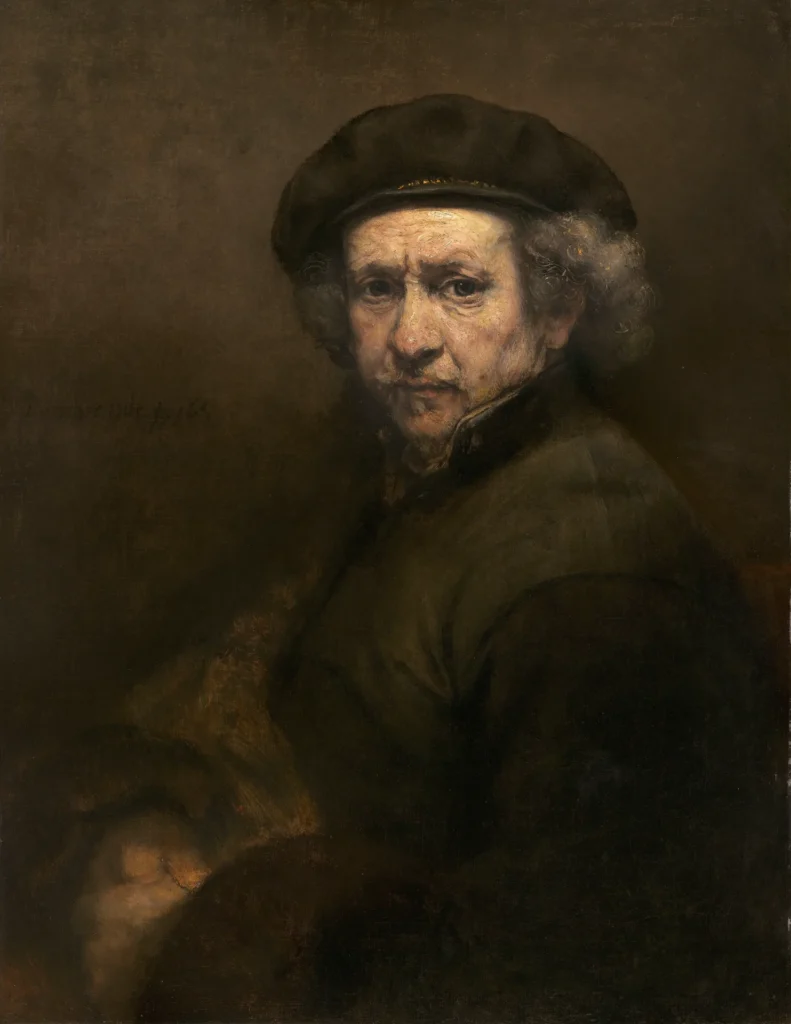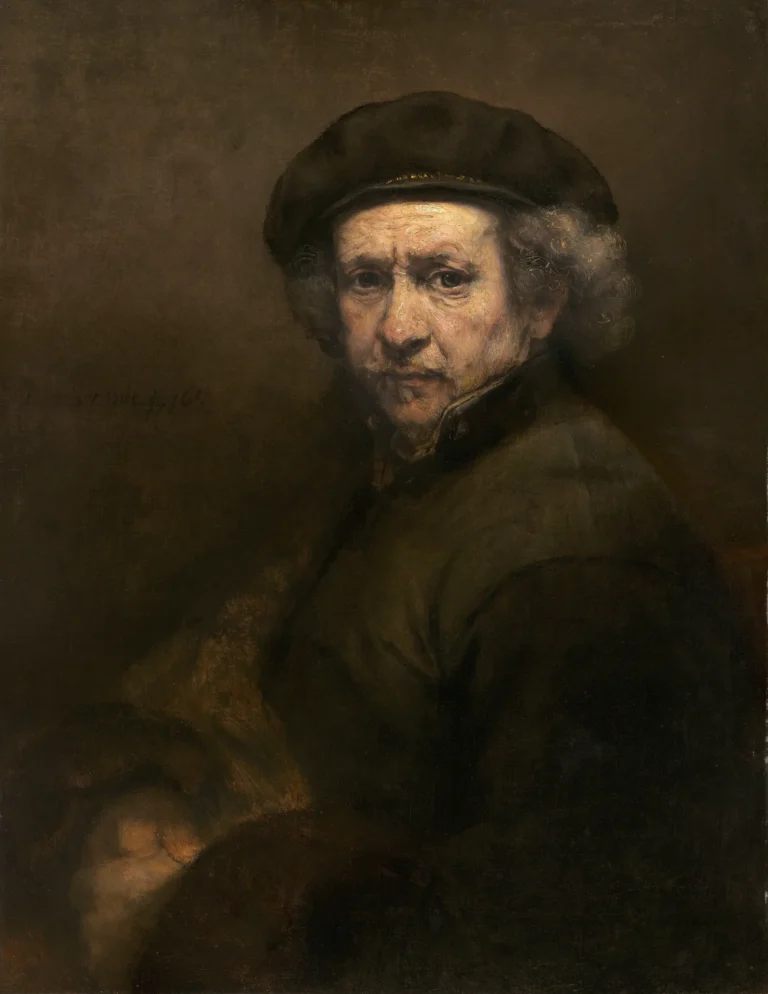Self-Portrait of Rembrandt Van Rjin
Rembrandt's self-portraits are an extraordinary body of work that chronicle the artist's life and emotions over several decades. The 1652 piece, painted after a seven-year break, reflects a more casual attire and technique that heightened shadows. In contrast, the 1655 self-portrait reveals a man laden with grief, produced during a tumultuous time of personal loss and financial ruin. By 1668, Rembrandt presents an aged visage that invites contemplation about life and laughter. Each work exemplifies his exceptional skill in portraying not just resemblance, but deeper layers of human experience.
1652, 1655, c. 1668
About the Artwork
Rembrandt van Rijn's journey with self-portraits is as profound as his triumphs and trials in life. The 1652 self-portrait marks a resurgence in his career after a focus on landscapes, where he embraced a humble attire that mirrored his contemplative state. Just three years later, the 1655 piece unveils a heart-wrenching chapter of his life, as he faced immense personal loss and looming financial desperation. It profoundly encapsulates the emotional weight he bore. By c. 1668, the portrayal of his aged self invites viewers to reflect on the wisdom and experiences gleaned through a tumultuous life, a theme that resonates deeply with the human condition. Rembrandt’s self-portraits serve not only as artistic demonstrations but as intimate windows into his evolving self-perception, marking his legacy as one of the greatest masters of human emotion in art.
Did You Know
Liked what you see? Add it to your collection.
Enjoyed reading? Share it.
... continued
Self-Portrait (1652) - Vienna
This oil-on-canvas painting, housed at the Kunsthistorisches Museum in Vienna, was created in 1652. It marks the first self-portrait Rembrandt painted after a seven-year hiatus, during which he focused on landscapes and domestic subjects. The painting depicts Rembrandt in a direct frontal pose, hands on his hips, wearing casual working attire, including a brown robe and a black beret. This contrasts with his earlier self-portraits, which often featured more elaborate and expensive clothing. This work is notable for its somber tone and the use of a local imprimatura, a technique where a separate underlayer of paint is applied to specific areas to enhance the shadows.
Self-Portrait (1655) - Scottish National Gallery
Painted in 1655, this self-portrait is part of the Scottish National Gallery's collection. It is a powerful depiction of Rembrandt during a period of significant personal and financial hardship. He was on the verge of financial ruin, having lost his wife Saskia and several children, and would soon declare insolvency. The painting is characterized by dark and brooding color tones and a piercing, honest stare. It captures the sadness and grief that Rembrandt was experiencing at the time.
Self-Portrait (c. 1668) - Wallraf-Richartz-Museum
This self-portrait, dated around 1668, is housed at the Wallraf-Richartz-Museum in Cologne. It portrays Rembrandt as visibly aged, with raised eyebrows and an open mouth that may suggest laughter, although the exact interpretation remains a subject of debate among art historians. The painting is remarkable for its psychological depth and the detailed depiction of Rembrandt's aged physiognomy, showcasing his mastery of capturing human emotion and physical appearance.










